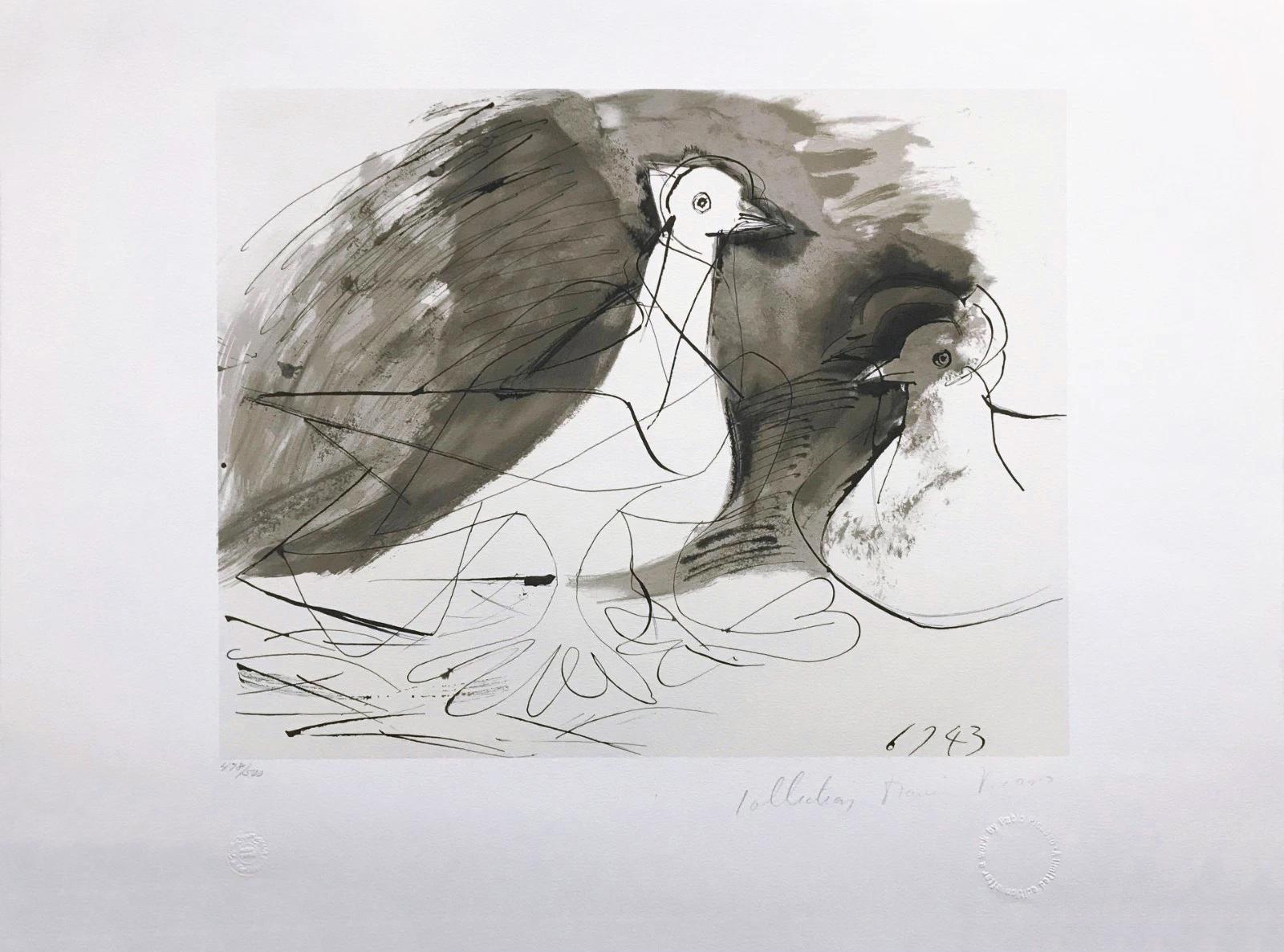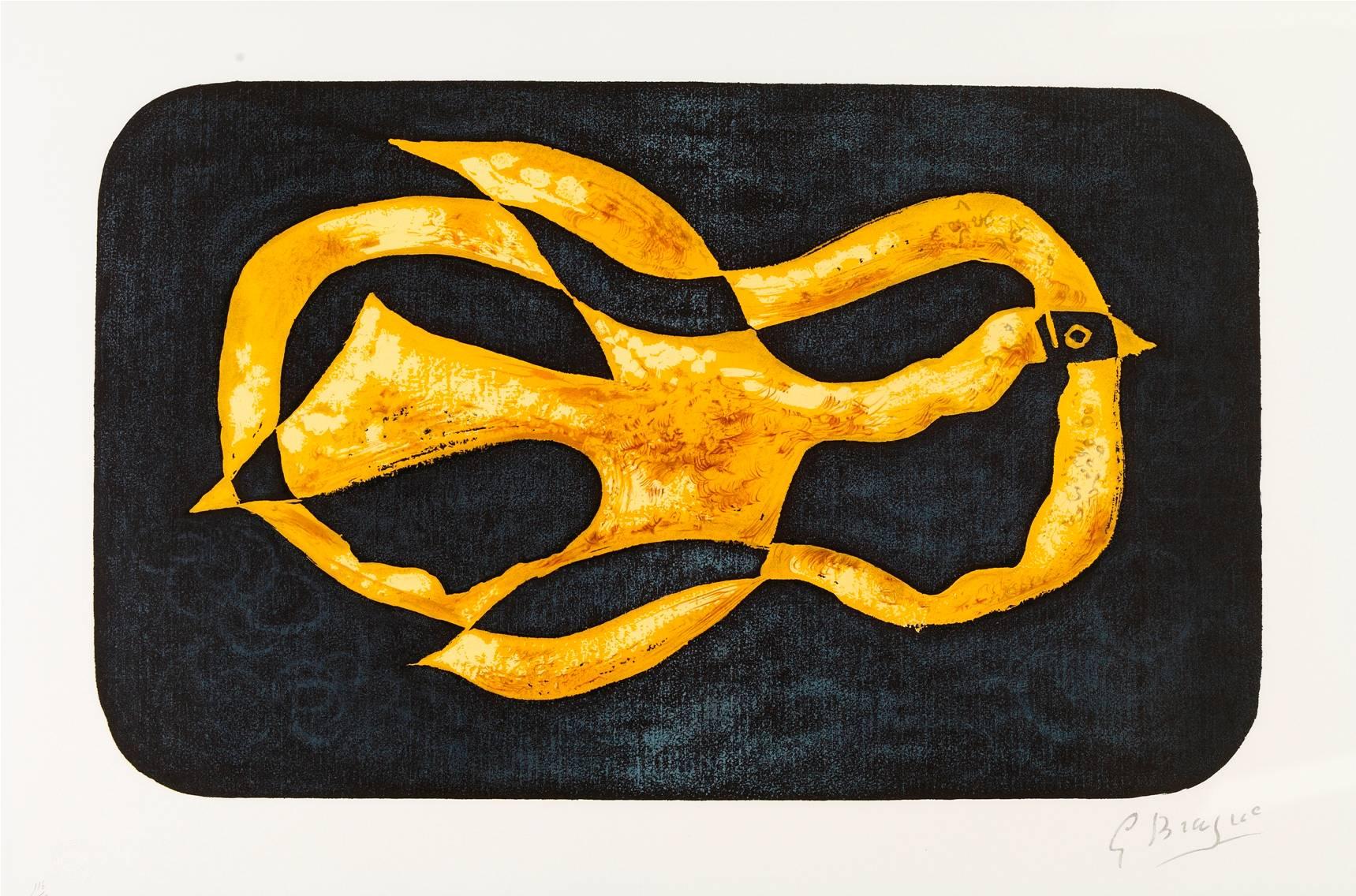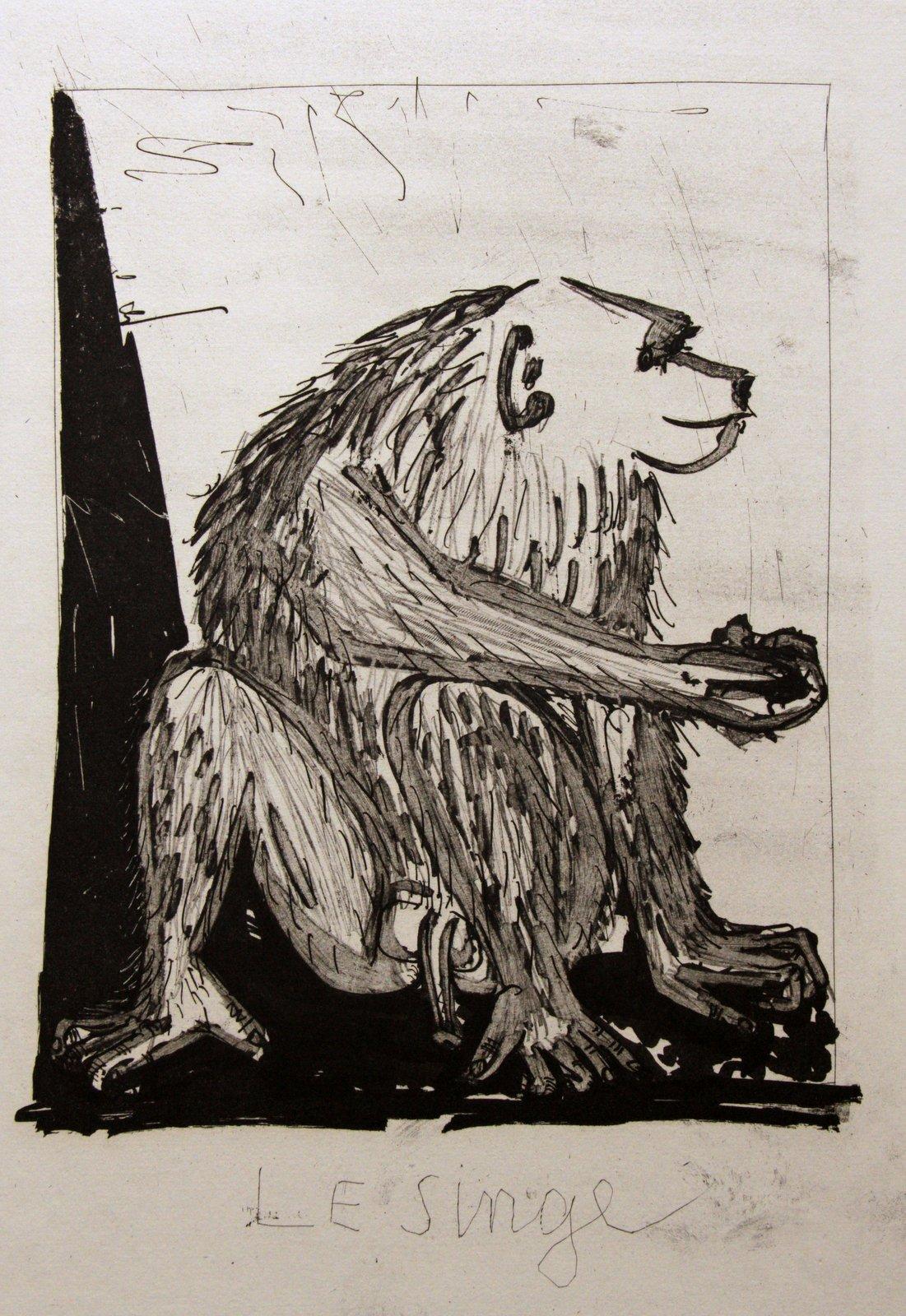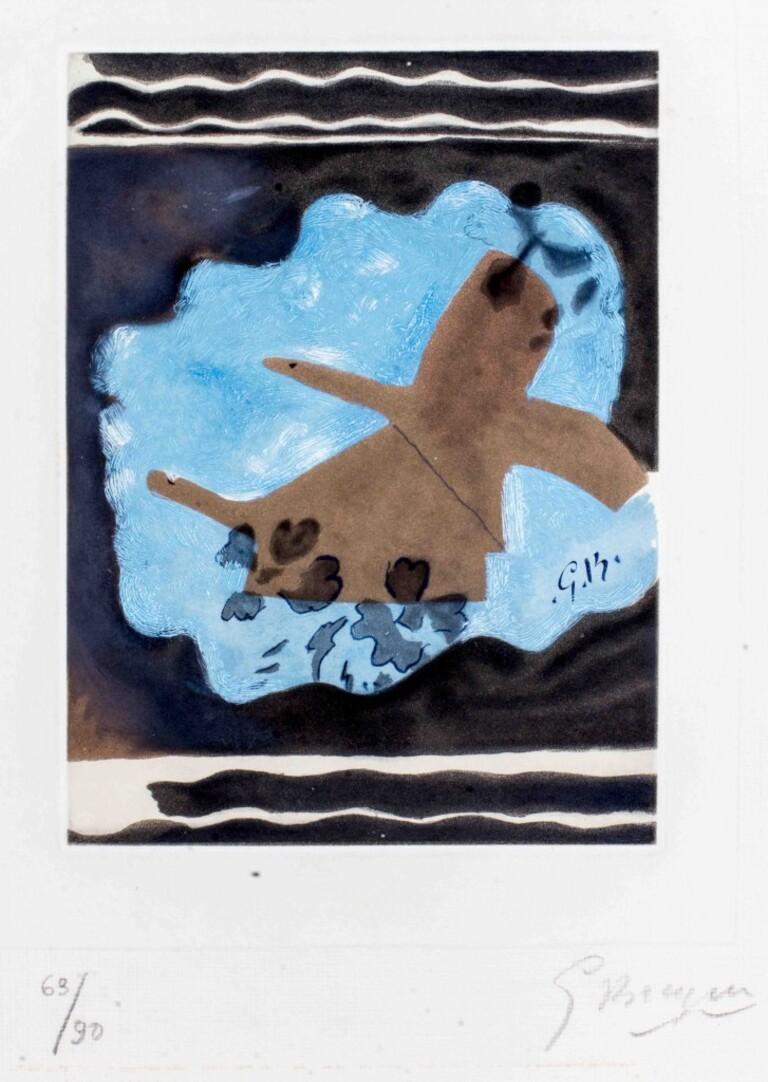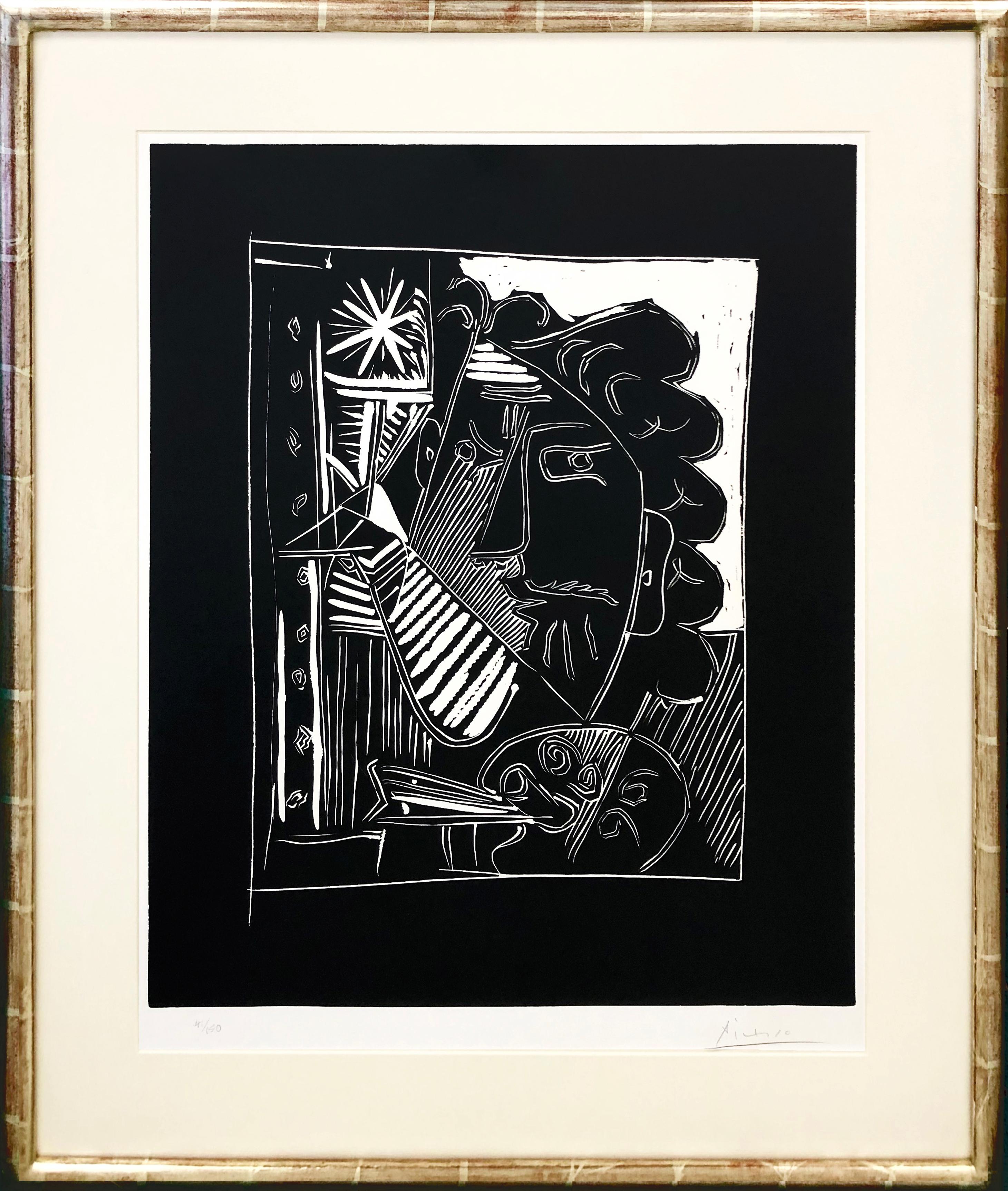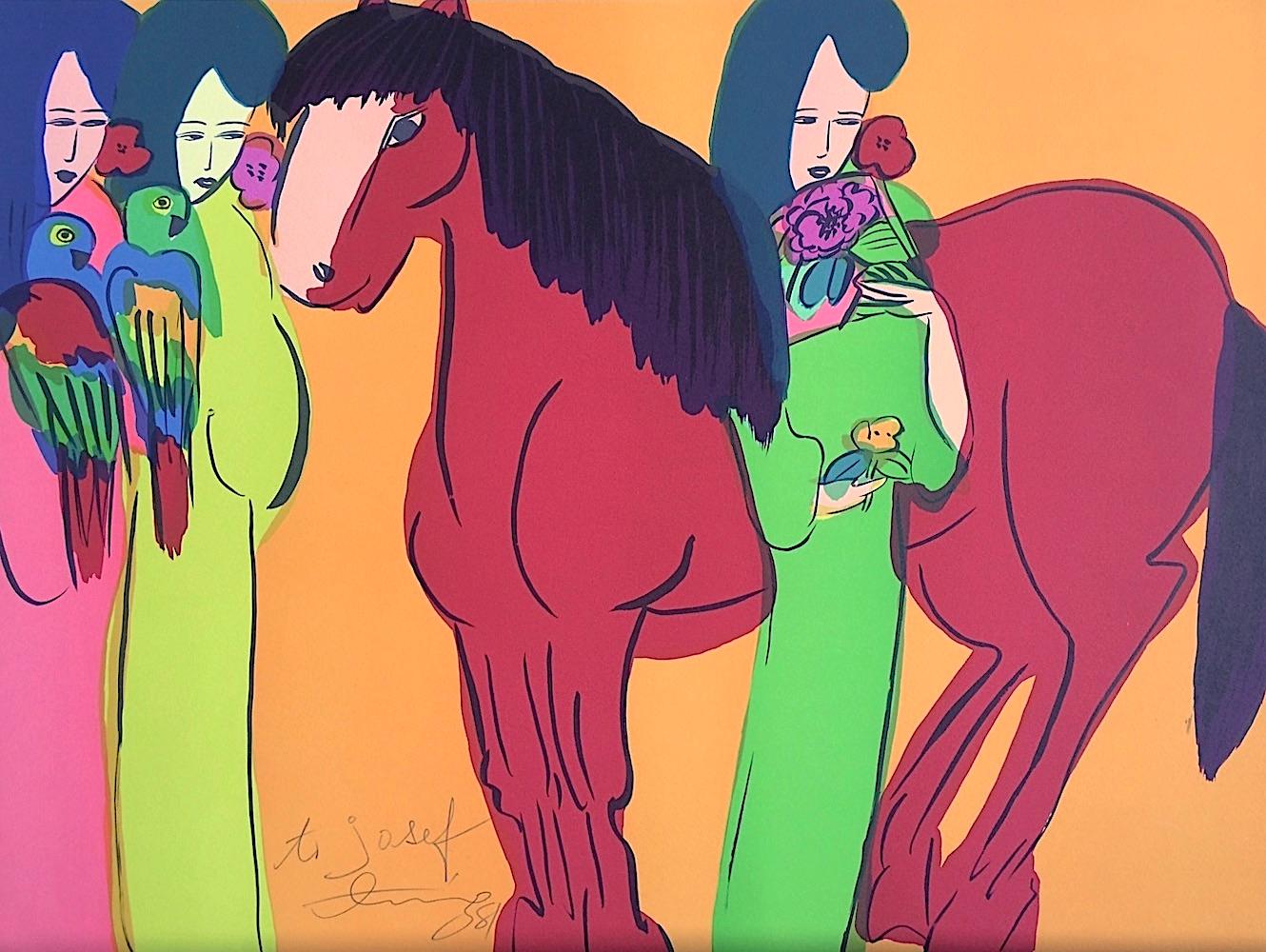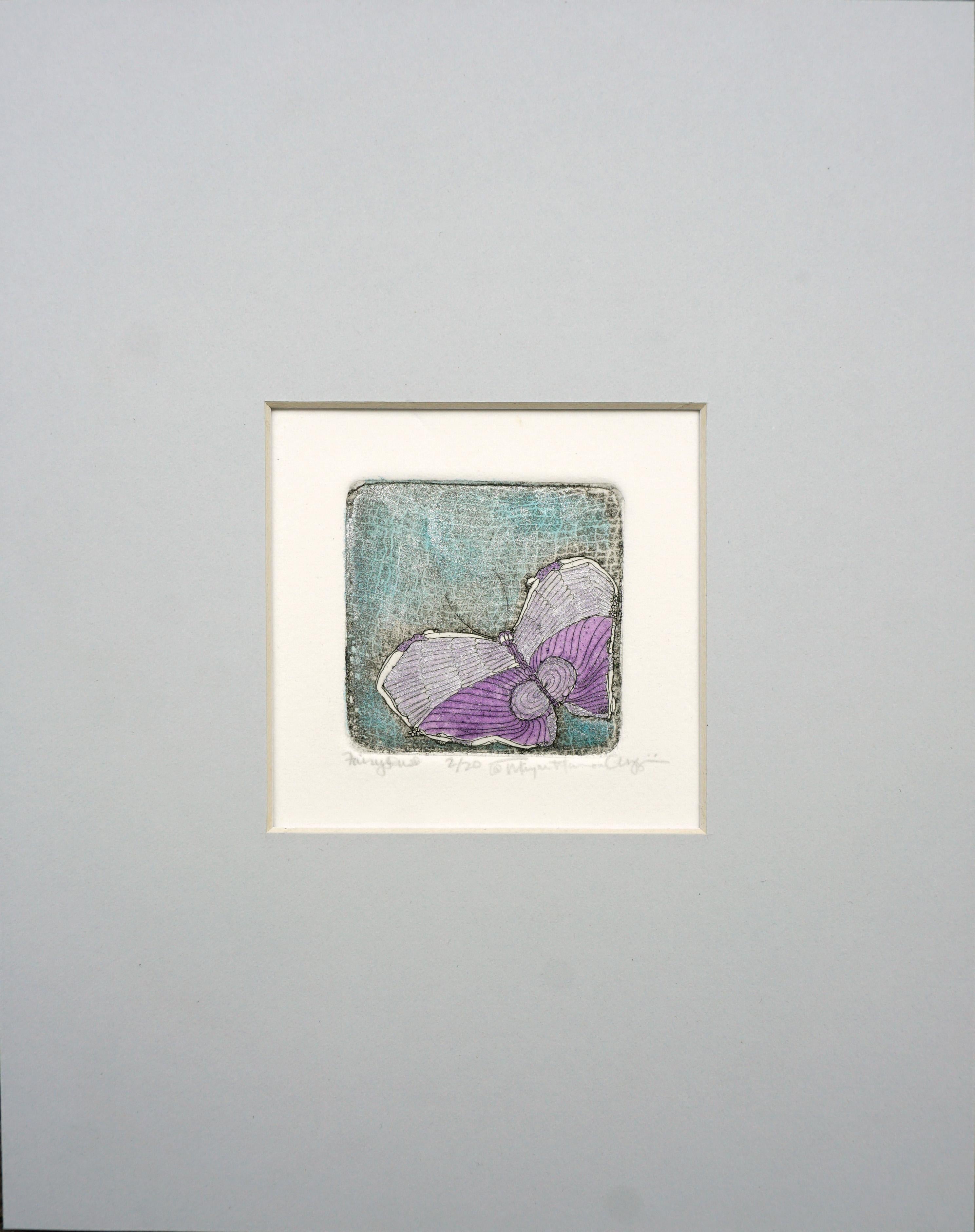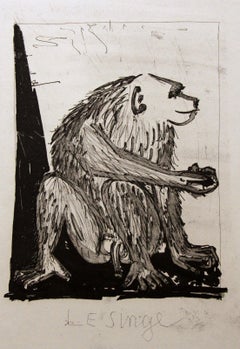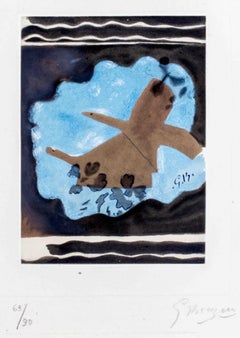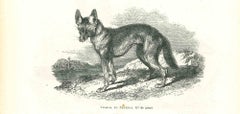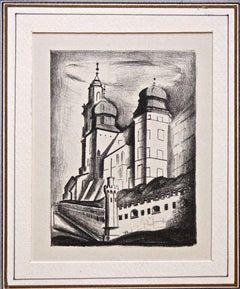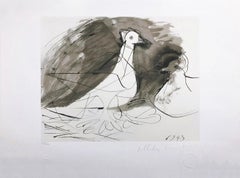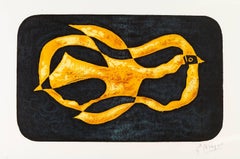Les Oiseaux - Lithograph after F. Léger - 1978
View Similar Items
Want more images or videos?
Request additional images or videos from the seller
1 of 6
(after) Fernand LégerLes Oiseaux - Lithograph after F. Léger - 19781978
1978
About the Item
- Creator:(after) Fernand Léger (1881 - 1955, French)
- Creation Year:1978
- Dimensions:Height: 22.25 in (56.5 cm)Width: 15.56 in (39.5 cm)Depth: 0.08 in (2 mm)
- Medium:
- Movement & Style:
- Period:
- Framing:Framing Options Available
- Condition:Insurance may be requested by customers as additional service, contact us for more information.
- Gallery Location:Roma, IT
- Reference Number:Seller: M-1150631stDibs: LU65037505132
(after) Fernand Léger
This print is part of my private collection. They were published in a numbered unsigned edition of 1000, and a signed edition of 200, printed by Serifraphie Fernand Leger, Paris and published by La Guilde International de la Gravure, Jean Bruller 1954/55. Initials in plate. They are catalogued in Lawrence Saphire's "Fernand Leger- Complete Graphic Work." They come from a portfolio sute of 10 serigraphs after original Fernand Leger gouaches. Fernand Leger 1881-1955, French was one of the major Cubist painters in France, later he also became a sculptor, art educator and filmmaker. In the early 1900's he was influenced by Cezanne and began creating in a more geometric style. He created his own style called Tubism with emphasis in cylindrical forms. He was considered one of France's three major Cubist painters among Picasso and Georges Brayer. Leger was influenced by the Italian "Futurism" style.
About the Seller
4.9
Platinum Seller
Premium sellers with a 4.7+ rating and 24-hour response times
1stDibs seller since 2017
7,515 sales on 1stDibs
Typical response time: 1 hour
Authenticity Guarantee
In the unlikely event there’s an issue with an item’s authenticity, contact us within 1 year for a full refund. DetailsMoney-Back Guarantee
If your item is not as described, is damaged in transit, or does not arrive, contact us within 7 days for a full refund. Details24-Hour Cancellation
You have a 24-hour grace period in which to reconsider your purchase, with no questions asked.Vetted Professional Sellers
Our world-class sellers must adhere to strict standards for service and quality, maintaining the integrity of our listings.Price-Match Guarantee
If you find that a seller listed the same item for a lower price elsewhere, we’ll match it.Trusted Global Delivery
Our best-in-class carrier network provides specialized shipping options worldwide, including custom delivery.More From This Seller
View AllLe Singe - Etching by Pablo Picasso - 1940s
By Pablo Picasso
Located in Roma, IT
Etching, aquatint and drypoint. Not Signed and not Numbered as issued.
Edition of 226 pieces.
Belongs to the Suite "Histoire Naturelle de Buffon" (plate p. 86).
Printed by Lacourièr...
Category
1940s Cubist Figurative Prints
Materials
Paper, Etching, Drypoint, Aquatint
Migration - Etching by Georges Braque - 1962
By Georges Braque
Located in Roma, IT
" Migration " is an etching realized by Georges Braque in 1962. The print is hand signed and numbered. This is an edition of 90 prints.
Bibliography: D. Vallier, Braque : l'oeuvre gravé: catalogue raisonné , Flammarion, Paris 1982, p.241, n.72.
Georges Braque (1882-1963) was a French Fauve painter who began to rethink his own painting style after admiring Picasso’s Les Demoiselles...
Category
1960s Cubist Animal Prints
Materials
Etching
The Jackal - Original Lithograph by Paul Gervais - 1854
By Paul Gervais
Located in Roma, IT
The Jackal is an original lithograph on ivory-colored paper, realized by Paul Gervais (1816-1879). The artwork is from The Series of "Les Trois Règnes de la Nature", and was publishe...
Category
1850s Modern Animal Prints
Materials
Paper, Lithograph
Landscape - Lithograph by M. Kisling - 1920s
Located in Roma, IT
Not signed. Includes passepartout (49 x 34 cm).
Category
1920s Modern Figurative Prints
Materials
Paper, Lithograph
Deers - Original Lithograph by Orfeo Vitali - 1970 ca.
By Orfeo Vitali
Located in Roma, IT
Limited edition of 100 prints, numbered and signed by the Artist.
Excellent condition.
Category
1970s Contemporary Figurative Prints
Materials
Lithograph
A Lying Animal - Original Lithograph by F. Specht - 1880
By Friedrich Specht 1
Located in Roma, IT
A Lying Animal is a black and white print realized by Friedrich Specht in 1880.
Lithograph on dark paper. Original Title: Derendet.
Dated 1880, p.24. Signed by the artist on the r...
Category
1870s Naturalistic Animal Prints
Materials
Lithograph
You May Also Like
PIGEONS
By (after) Pablo Picasso
Located in Aventura, FL
Selected from the personal collection inherited by Marina Picasso, Pablo Picasso's granddaughter. After Pablo Picasso's death, his granddaughter Marina authorized the printing of t...
Category
1980s Cubist Animal Prints
Materials
Paper, Lithograph
MINOTAURE AVEUGLE CONDUIT PAR UNE PETITE FILLE
By (after) Pablo Picasso
Located in Aventura, FL
Selected from the personal collection inherited by Marina Picasso, Pablo Picasso's granddaughter. After Pablo Picasso's death, his granddaughter Marina authorized the printing of t...
Category
1980s Cubist Animal Prints
Materials
Paper, Lithograph
NATURE MORTE A LA PALETTE ET A LA TETE
By (after) Pablo Picasso
Located in Aventura, FL
Selected from the personal collection inherited by Marina Picasso, Pablo Picasso's granddaughter. After Pablo Picasso's death, his granddaughter Marina authorized the printing of t...
Category
1980s Cubist Animal Prints
Materials
Paper, Lithograph
After Georges Braque - Antiborée - Lithograph
Located in Collonge Bellerive, Geneve, CH
Lithograph after Georges Braque.
Signed in the plate
Edition of 150
Dimensions: 76 x 117 cm
Bibliography:
« Les Métamorphoses de Braque» of Heger de Loewenfeld and Raphaël de Cuttoli , Editions FAC, Paris, 1989.
In 1961 Georges Braque decided with his laidary friend Heger de Loewenfeld to pick up certain of his works to in order to create artworks, this beautiful litograph is one of them.
Héméra in the Mythology:
In Greek mythology Hemera was the personification of day and one of the Greek primordial deities. She is the goddess of the daytime and, according to Hesiod, the daughter of Erebus and Nyx (the goddess of night). Hemera is remarked upon in Cicero's De Natura Deorum, where it is logically determined that Dies (Hemera) must be a god, if Uranus is a god. The poet Bacchylides states that Nyx and Chronos are the parents, but Hyginus in his preface to the Fabulae mentions Chaos as the mother/father and Nyx as her sister.
She was the female counterpart of her brother and consort, Aether (Light), but neither of them figured actively in myth or cult. Hyginus lists their children as Uranus, Gaia, and Thalassa (the primordial sea goddess), while Hesiod only lists Thalassa as their child.
The father of Cubism
Three Cubist that distinguishes art historian periods were initiated and developed by Georges Braque: The Cubist Cézanne (1907-1909), Executive (1909-1912) and synthetic (1912-1922).
Post-Impressionist and fawn, Braque no longer adheres to the contingency of a decorative way or the other. Cézanne’s paintings exhibited at the Grand Palais during the retrospective of 1907 are a revelation: Cézanne sought and invented a pictorial language. In his footsteps, Braque went to the South with the reasons of the Master. He returned with Estaque landscapes and surprising Ciotat it keeps Cezanne geometric model and retains the “passages” continuity from one surface to another to create the sensation of “turning around” of the object represented. But he wants to go after the consequences of the vision of Cezanne. In his paintings Houses in L’Estaque (1908) it simplifies the volumes of houses, neglects detail by removing doors and windows: the plastic rhythm that builds the table. Large Nude , a masterpiece of the period, can be considered the first work of Cézanne cubism .
Systematizing and deepening Braque discoveries open the door analytical cubism. In 1909, his painting became more cerebral than sensual. The pattern is recreated in the two-dimensionality of the canvas, leaving aside any illusionistic perspective. In Still Life with Violin, objects are analyzed facets according to their characteristic elements, each facet referring to a particular view of the object. There are so many facets of points selected view: Table reflects the knowledge of the object and the ubiquity of the eye. Moreover, Braque is looking for the essence of the objects in the world rather than their contingency, which explains the absence of light source and use of muted colors (gray, ocher), contingent aspects of the object . But formal logic has stepped facets, erased any anecdote to the object and ultimately led to his painting a hermetic more marked on the edge of abstraction (see the series of Castle Roche-Guyon ).
Braque, anxious to keep the concrete and refusing at all costs that the logic of Cubism takes the paintings to abstract, reintroduced signs of reality in his paintings in 1912 marks the beginning of Synthetic Cubism. Historians speak of “signs of real” rather than reality because what interests Braque, this is not to put reality into a table, but to create a painting which, by its language, refers to the real. To do this, he invented two major techniques XX th century inclusions and contributions. The inclusions consist of painting objects that have no real depth, materials (wallpaper in Nature morte aux playing cards faux wood is a pictorial inclusion) or letters (calligraphic inclusion in Portuguese ), made first brush and a few months later stencil. Contributions are defined in contrast with the collage on canvas of foreign materials: glued or sand paper, sawdust, etc.. Regarding the collages, Braque used for the first time in September 1912 a piece of adhesive paper imitating faux wood Compote...
Category
1950s Cubist Animal Prints
Materials
Lithograph
La Fille aux Oies
By Jean-Emile Laboureur
Located in New York, NY
Jean-Emile Laboureur (1877-1943), La Fille aux Oies, engraving, 1916, signed in pencil lower left, numbered (4/40) lower right and inscribed “imp,” also titled lower left margin edge...
Category
1910s Cubist Figurative Prints
Materials
Engraving
MAMELOUK ENLEVANT UNE FEMME, ATTAQUE PAR UN MOUSQUETAIRE (BLOCH 1586)
By Pablo Picasso
Located in Aventura, FL
Aquatint on wove paper. Hand signed and numbered by Pablo Picasso. Plate 106, from the serie "347 gravures" (B. 1586; BA. 1602 II B b 1). Published by Galerie Louise Leiris, Paris. ...
Category
1960s Cubist Animal Prints
Materials
Paper, Engraving
